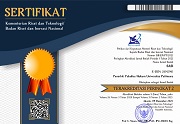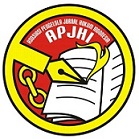Tanggungjawab Pemerintah Dan Pelaku Usaha Makanan Siap Saji Terkait Penggunaan Wadah Plastik Yang Berbahaya Bagi Konsumen Di Kota Ambon
 ), Vica Jilyan Edsti Saija(2)
), Vica Jilyan Edsti Saija(2)
(1) Fakultas Hukum Universitas Pattimura, Indonesia
(2) Fakultas Hukum Universitas Pattimura, Indonesia
 Corresponding Author
Corresponding Author
Abstract
Keywords
DOI
10.47268/sasi.v23i2.103
Published
2018-04-02
How To Cite
@article{SASI103,
author = {Agustina Balik and Vica Saija},
title = {Tanggungjawab Pemerintah Dan Pelaku Usaha Makanan Siap Saji Terkait Penggunaan Wadah Plastik Yang Berbahaya Bagi Konsumen Di Kota Ambon},
journal = {SASI},
volume = {23},
number = {2},
year = {2018},
keywords = {responsibility; government; business actors; dangerous plastic containers},
abstract = {Plastic containers are the most popular food packaging materials used. Many businesses choose plastic as a container for their products, because the plastic has excellent properties such as: strong but light, practical, cheap and not out of date. Though it use is very dangerous because can happen migration of chemicals from plastic to food wrapped especially in the heat. The role of BPOM (Food and Drug Supervisory Agency) and the Office of Industry and Trade on Consumer Protection has not been effective in socializing the dangers of using plastic as a food packaging container. The research method used is the normative juridical research method to examine the legal material, the provisions of positive law, legal principles, legal principles and legal doctrine to answer the legal issues faced. The form of supervision is part of the function and at the same time is the responsibility of BPOM and the Office of Industry and Trade in the field of Consumer Protection in an effort to provide protection to the community. demanded knowledge and awareness of business actors in choosing containers used to wrap food to be purchased by consumers. Responsibility on the basis of an error may be imposed on a business actor if the business actor makes a mistake that harms another person. While the absolute responsibility of direct business actor is responsible as business risk. Therefore, for a business actor who uses a plastic container that is harmful to human safety, he or she may be held liable for damages},
issn = {2614-2961}, pages = {95--107} doi = {10.47268/sasi.v23i2.103},
url = {https://fhukum.unpatti.ac.id/jurnal/sasi/article/view/103}
}
Z. Nasution (2002), Hukum Perlindungan Konsumen Suatu Pengantar, Diadit Media, Jakarta
Hamzah, Andi, (2005), Kamus Hukum, Ghalia Indonesia
Waluyo, Bambang, (1991), Penelitian Hukum, PN, Sinar Grafika, Jakarta
Wahyuni, Endang Sri, (2003), Aspek hukum Sertifikasi dan Keterkaitannya dengan Perlindungan Konsumen, PT. Citra Aditya Bakti, Bandung
J. Supranto, (2003), Metode penelitian dan Statistik, Rineka Cipta, Jakarta
Pieris, Jhon dan Widiarty, Wiwik Sri, (2007), Negara Hukum dan Perlindungan Konsumen, Pelangi Cendekia, Jakarta
Ibrahim, Jhonny, (2012), Teori dan Metodologi Penulisan hukum Normatif, Banyumedia Publishing, Malang
Siahaan, N.H.T., (2005), Hukum Konsumen: Perlindungan Konsumen dan Tanggung Jawab Produk, Panta Rei, Jakarta
Abbas, Nurhayati, (2011), Tanggungjawab Produk Terhadap Konsumen dan Implementasi Pada Produk Pangan, AS Publishing, Makassar
Sidharta, (2000), Hukum Perlindungan Konsumen Indonesia, Grasindo, Jakarta
Nugroho, Susanti, (2008), Proses penyelesaian Sengketa Konsumen Ditinjau Dari Hukum Acara Secara Kendala Implementasinya, Kencana, Jakarta
Notoatmojo, Soekidjo, (2010), Etika dan Hukum Kesehatan, Rineka Cipta, Jakarta
Triwulan, Titik dan Febrian, Shinta, (2010), Perlindungan Hukum Bagi Pasien, Prestasi Pusaka, Jakarta
Kitab Undang-Undang Hukum Perdata (KUHP)
Undang-Undang Nomor 8 Tahun 1999 Tentang Perlindungan Konsumen
Undang-Undang Nomor 18 Tahun 2012 tentang Pangan
Peraturan Pemerintah Nomor 28 Tahun 2004 tentang Keamanan, Mutu, dan Gizi pangan
Kemasan plastik Tidak Selalu Aman, http://antaranews.com,
Mujahidin Neo, Jenis-Jenis Plastik Menurut Kadar Kimia Yang Membahayakan Bagi Tubuh, http://aryafatta.wordpress.com,
Produk Plastik Berbahaya, http://indosiar.com,
Sutrisno Koswara, “Bahaya Dibalik Kemasan Plastikâ€, http://ebookpangan.com
Sapto Nubroho Adi, “Ancaman polimik Sintetik Bagi Kesehatan Manusiaâ€, http://www.chem-ia-try.org/?sect=articel&ect=69
Cited-By:
1. Detection of microplastic release into water from plastic containers based on lensless digital holography
Liang Xue, Hao Chen, Hao Zhou, Yusheng Wu, Chunjuan Wei, Youhua Jiang, Hao Yang Cui
Nanoscale Advances vol: 7 issue: 23 first page: 7527 year: 2025
Type: Journal [View Source]
2. Penerapan Prinsip Due Care Oleh Produsen Terhadap Peredaran Obat Di Masyarakat
Abdul Amtsal, Theresia Louize Pesulima, Agustina Balik
TATOHI: Jurnal Ilmu Hukum vol: 4 issue: 8 first page: 625 year: 2024
Type: Journal [View Source]
| Dublin Core | PKP Metadata Items | Metadata for this Document | |
| 1. | Title | Title of document | Tanggungjawab Pemerintah Dan Pelaku Usaha Makanan Siap Saji Terkait Penggunaan Wadah Plastik Yang Berbahaya Bagi Konsumen Di Kota Ambon |
| 2. | Creator | Author's name, affiliation, country | Agustina Balik; Fakultas Hukum Universitas Pattimura; Indonesia |
| 2. | Creator | Author's name, affiliation, country | Vica Jilyan Edsti Saija; Fakultas Hukum Universitas Pattimura; Indonesia |
| 3. | Subject | Discipline(s) | |
| 3. | Subject | Keyword(s) | responsibility; government; business actors; dangerous plastic containers |
| 4. | Description | Abstract | Plastic containers are the most popular food packaging materials used. Many businesses choose plastic as a container for their products, because the plastic has excellent properties such as: strong but light, practical, cheap and not out of date. Though it use is very dangerous because can happen migration of chemicals from plastic to food wrapped especially in the heat. The role of BPOM (Food and Drug Supervisory Agency) and the Office of Industry and Trade on Consumer Protection has not been effective in socializing the dangers of using plastic as a food packaging container. The research method used is the normative juridical research method to examine the legal material, the provisions of positive law, legal principles, legal principles and legal doctrine to answer the legal issues faced. The form of supervision is part of the function and at the same time is the responsibility of BPOM and the Office of Industry and Trade in the field of Consumer Protection in an effort to provide protection to the community. demanded knowledge and awareness of business actors in choosing containers used to wrap food to be purchased by consumers. Responsibility on the basis of an error may be imposed on a business actor if the business actor makes a mistake that harms another person. While the absolute responsibility of direct business actor is responsible as business risk. Therefore, for a business actor who uses a plastic container that is harmful to human safety, he or she may be held liable for damages |
| 5. | Publisher | Organizing agency, location | Faculty of Law, Universitas Pattimura |
| 6. | Contributor | Sponsor(s) | |
| 7. | Date | (YYYY-MM-DD) | 2018-04-02 |
| 8. | Type | Status & genre | Peer-reviewed Article |
| 8. | Type | Type | |
| 9. | Format | File format | PDF (Bahasa Indonesia) |
| 10. | Identifier | Uniform Resource Identifier | https://fhukum.unpatti.ac.id/jurnal/sasi/article/view/103 |
| 10. | Identifier | Digital Object Identifier | 10.47268/sasi.v23i2.103 |
| 11. | Source | Title; vol., no. (year) | SASI; Vol 23, No 2 (2017): Volume 23 Nomor 2, Juli - Desember 2017 |
| 12. | Language | English=en | id |
| 13. | Relation | Supp. Files | |
| 14. | Coverage | Geo-spatial location, chronological period, research sample (gender, age, etc.) | |
| 15. | Rights | Copyright and permissions | Copyright: Authors who publish their manuscripts in this Journal agree to the following conditions: 1. The copyright in each article belongs to the author, as well as the right to patent. 2. Authors can enter into separate, additional contractual arrangements for the non-exclusive distribution of the journal's published version of the work (e.g., post it to an institutional repository or publish it in a book), with an acknowledgment of its initial publication in this journal. 3. Authors are permitted and encouraged to post their work online (e.g., in institutional repositories or on their website) before and during the submission process, as it can lead to productive exchanges, as well as earlier and greater citation of published work. 4. Authors have the right to self-archiving of the article (Author Self-Archiving Policy)
License: The SASI Journal is disseminated based on the Creative Commons Attribution-NonCommercial 4.0 International license terms. This license allows anyone to copy and redistribute this material in any form or format, compose, modify, and make derivatives of this material for any purpose. You cannot use this material for commercial purposes. You must specify an appropriate name, include a link to the license, and certify that any changes have been made. You can do this in a way that is appropriate but does not imply that the licensor supports you or your use.
|
Copyright (c) 2018 Agustina Balik, Vica Jilyan Edsti Saija

This work is licensed under a Creative Commons Attribution-NonCommercial 4.0 International License.
Cited-By:
1. Detection of microplastic release into water from plastic containers based on lensless digital holography
Liang Xue, Hao Chen, Hao Zhou, Yusheng Wu, Chunjuan Wei, Youhua Jiang, Hao Yang Cui
Nanoscale Advances vol: 7 issue: 23 first page: 7527 year: 2025
Type: Journal [View Source]
2. Penerapan Prinsip Due Care Oleh Produsen Terhadap Peredaran Obat Di Masyarakat
Abdul Amtsal, Theresia Louize Pesulima, Agustina Balik
TATOHI: Jurnal Ilmu Hukum vol: 4 issue: 8 first page: 625 year: 2024
Type: Journal [View Source]

 : 2607 times
: 2607 times Download : 1352 times
Download : 1352 times
















